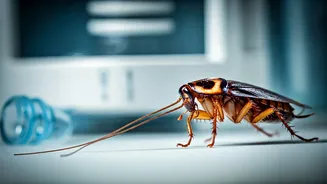The Silent Threat
Toxoplasma gondii, commonly referred to as T. gondii, is a single-celled parasite that can infect various warm-blooded animals, including humans. Cats
play a significant role in its life cycle, as they are the definitive hosts. This means the parasite can reproduce sexually only inside a cat. Humans can become infected through several ways: ingesting undercooked meat containing the parasite, consuming contaminated water or food, or through contact with cat feces. For many, infection causes no noticeable symptoms, but for those with weakened immune systems or pregnant women, it can cause severe health complications. The parasite can lead to toxoplasmosis, a disease that can affect the brain, eyes, and other organs. The impact can range from flu-like symptoms to serious neurological damage or birth defects.
Understanding Transmission Pathways
The main ways humans contract T. gondii involve contact with infected cat feces, consumption of undercooked or contaminated meat, and, less commonly, through organ transplantation or blood transfusions. When cats are infected, they shed oocysts (the parasite's eggs) in their feces. These oocysts can survive in the environment for months, making them a potential source of infection. Handling cat litter, gardening in contaminated soil, or consuming unwashed vegetables that have come into contact with oocysts can lead to infection. Another significant transmission route involves eating raw or undercooked meat, particularly pork, lamb, and venison, where the parasite might be present in tissue cysts. Additionally, pregnant women can transmit the parasite to their unborn child, resulting in congenital toxoplasmosis, which can cause severe health issues for the baby.
Protecting Yourself Effectively
Preventing toxoplasmosis requires adopting several precautionary measures. Thoroughly wash hands with soap and water after handling raw meat, gardening, or coming into contact with cat litter. When preparing food, ensure that cutting boards and utensils used for raw meat are cleaned carefully to avoid cross-contamination. Cook meat to an internal temperature of at least 145°F (63°C) to kill the parasite. If you own a cat, it is crucial to maintain proper hygiene. Have the cat litter box cleaned daily, as the parasite takes a day or two to become infectious after being shed in feces. Pregnant women should avoid cleaning the litter box altogether or have someone else do it while wearing gloves and a mask. Feed your cat commercially prepared dry or canned food, and prevent your cat from hunting wild animals, which could transmit the parasite.
Recent Scientific Breakthroughs
Significant advances are being made in the treatment of toxoplasmosis. Researchers have identified a potential "off-switch" for the T. gondii parasite by disabling a specific protein. This breakthrough offers new hope for creating safer and more effective treatments. The protein targeted in this research is not found in humans, suggesting that targeted therapies could be developed without harming human cells. Currently, treatments often involve antibiotics, such as pyrimethamine and sulfadiazine, which have potential side effects. The new research paves the way for medications that can specifically target the parasite, reducing side effects and improving the overall treatment outcomes. Further studies are underway to assess the efficacy and safety of these new therapeutic approaches.
Hygiene and Pet Care
Despite ongoing research and advancements in treatment, practicing diligent hygiene and responsible pet care remains crucial in preventing toxoplasmosis. Thorough handwashing after any contact with cats, their litter boxes, or potentially contaminated surfaces is essential. Cleaning litter boxes daily is important because the oocysts need time to become infectious. Pregnant women should be especially cautious and either avoid litter box duties or use extreme care. By combining good hygiene practices, proper food handling, and responsible cat care, the risk of toxoplasmosis can be significantly reduced. As more effective treatments are developed, the emphasis on prevention will continue to protect public health and the well-being of both humans and their feline companions.












